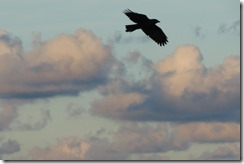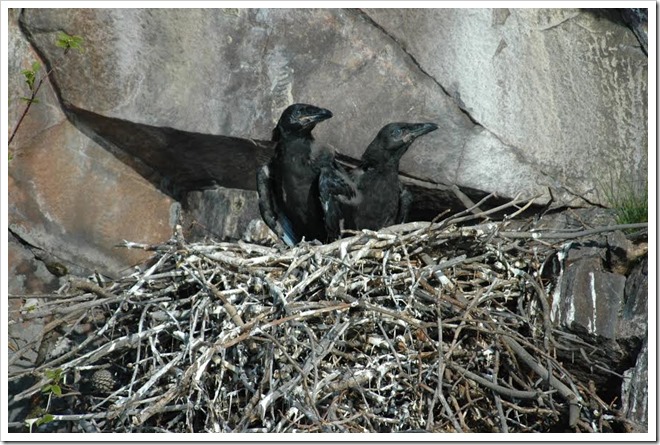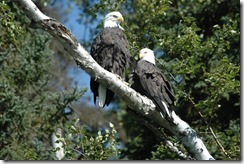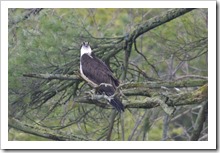Written by
Gerry Smith posted on January 13, 2017 12:42
When this young biologist first began working on the River in 1976, many things were very different in the bird world. The changes since then, both positive and negative, have been truly remarkable. While bird population fluctuations and changes in distribution occur normally over time, the actions of humans often accelerate these fluctuations. Many of these changes can be directly attributed to our impacts on the planet, or are at least in part due to us. In a mere four decades, a flash in time on nature's calendar, there have been significant changes in the avifauna of our region. I have observed these changes and am astounded by how different things are now, from what they once were.
I will admit to a personal tendency to often focus on what we are doing to the planet that results in negative outcomes. So I will start by focusing on the gains in birdlife since 1976. The most striking positives involve the return of large size species that had been eliminated, or greatly reduced, in prior decades. Perhaps the longest absent native was the Common Raven. Gone from the region, as a result of deforestation, trapping, shooting and poisoning, this species was absent for 125 years. In 1976, they could only be regularly found in the Adirondacks, with a few in the Catskills. Listed as threatened on the first NYS endangered species list, their recovery is striking.

In Flight. Photo by Judy Munro
|
A highly adaptable species, found throughout much of the Northern Hemisphere, the Common Raven is a survivor. In 1910 only 25 percent of New York was forested and now it is three times that amount. That reforestation, with resultant reduction of farm boy shooting trapping and other direct persecution, has allowed rapid population expansion in a mere thirty years. Ravens now nest regularly and are present year round throughout the Thousand Islands- Golden Crescent region. Many nests are on human structures such as silos as well as on rocky island cliffs. Individuals are currently pioneering territories in such wild areas as Staten Island and Long Island. The return of this native is mirrored by other species recovering from human induced problems.

Bluff Island Ravens. Photo by Bill Munro
|
The recovery of many birds of prey from DDT induced declines, is reflected locally. As a young biologist working on the Environmental Impact of proposed Winter Navigation, I discovered a small wintering Bald Eagle population, along the St Lawrence. I should say re-discovered, because wintering of eagles were known there, prior to Seaway construction. Historical data from observers such as the Brockville Field Naturalists had been largely forgotten by most agencies during the DDT era. The presence of even a few of these highly endangered birds caused a furor amongst the proponents of winter Navigation. I have no doubt that our national bird played a definite role in derailing that idiotic proposed project. I predicted at the time that the available habitat could hold many more individuals if a future population recovery occurred.
Beginning in the early 1980s the prophecy began to come true. The international section of the River now hosts at least 75-150 wintering eagles, where there were 3-4 in 1976. Exact numbers depend on ice and water patterns and other factors present but this species is back with a vengeance. During the warmer seasons human visitors to the area may see birds from the few local nests. In addition, summer visitors of all age classes, of the growing winter nesting Florida population are widely distributed here from May to September. As a result of public awareness and nature education, illegal shooting of this species has declined greatly in the last half century.
In my opinion Bald Eagle populations in the Great Lakes region and elsewhere are as high as they have been since the Civil War.

Mature eagle pair. Phot by Bill Munro
|
Other birds of prey that were seriously impacted by chlorinated hydrocarbon pesticides have enjoyed an equally remarkable recovery. In 1976, only a few Osprey pairs nested in the relatively clean Indian River Lakes region. The banning of DDT began the process of reducing environmental residues and by the early 1980s an expanding population recovery was under way. During the last quarter century, this species has become the most obvious and one of the most common raptors in our region. Nesting on all types of human structures, from poles to cell towers, the Osprey is rapidly achieving the equivalent status locally, of the white storks of Europe. They now seem omnipresent from April to August, a far cry from the mid 1970s.

Osprey. Photo by Judy Munro
|
While the Ospreys made it back on their own, the Peregrine Falcon required human help. Peregrines probably nested historically, on cliffs in our region, prior to the DDT era. It is certain that the subspecies that nested in the northeast was virtually extinct in the wild, by the 1960s. The development of a captive breeding program under the auspices of the New York State Department of Environmental Conservation, resulted in release of hand reared birds in the Adirondacks and other sites. The descendants of these birds are now pioneering new sites. Nesting has occurred on large dams along the River. It seems reasonable that future expansion will occur.
The previous changes mentioned have all involved recovery, from human induced catastrophe, to rejoin our avifauna. Other changes of interest have occurred in the last forty years as well. An always common species the American Crow. Everybody knows this common bird and few pay much attention to it. Unless one views crows as some sort of nuisance, they are ignored by most humans except crazy bird people. Well in our region winter crow occurrence patterns have changed dramatically in the last forty years. In the 1970s and 80s, nary a crow would be seen in mid-winter, north of Watertown. Now the species is resident year 'round, with pairs defending territory all throughout the winter. I even have a resident pair in my back yard, atop the snowy Tug Hill Plateau. While this may not seem like a big deal to the casual observer, it's a sea change for this bird guy. Reasons? Pure speculation, but I would give climate change a role and to be sure we need to tune in tomorrow.
These are only some of the dynamic changes in our regions avifauna more to come next time.
By Gerry Smith
Gerald A. "Gerry" Smith, is an ornithologist who can often be found leading fellow bird enthusiasts on guided Thousand Island Trust (TILT)tours, throughout the year. He is a graduate of the biology program at SUNY Oswego, is one of the founding members of Derby Hill Bird Observatory, along Lake Ontario. He was the first staff ornithologist at Derby Hill, for the Onondaga Audubon Society. Gerry was President of the Onondaga Audubon Society and in 2010 he published the popular guide book, "Birding the Great Lakes Seaway Trail.”
.